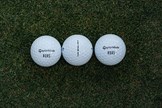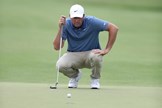Why drawing a line on your golf ball could be doing you more harm than good
Last updated:
Lots of golfers use a line on their ball to help aim putts – but could it actually be hurting your performance? We look at the science, psychology, and what tour pros think.
For years, golfers have been encouraged to draw a line on their ball to help with alignment on the greens. It’s a trick you see on the PGA Tour, on YouTube tips, and among amateurs across the globe.
In fact, a recent survey found that 71% of golfers use a line on their golf ball (either hand-drawn or pre-printed) to help them aim when putting.
But what if this supposedly simple aid is actually hurting more than it helps?
The idea behind a line seems bulletproof. Given the importance of alignment in putting, why wouldn’t you add a completely legal aid to help you aim better?
But when you start digging into what actually happens when you putt with a line on your ball, things get murkier. Especially when you listen to what some of best players in the world think – and why many players and coaches are beginning to push back on its effectiveness.
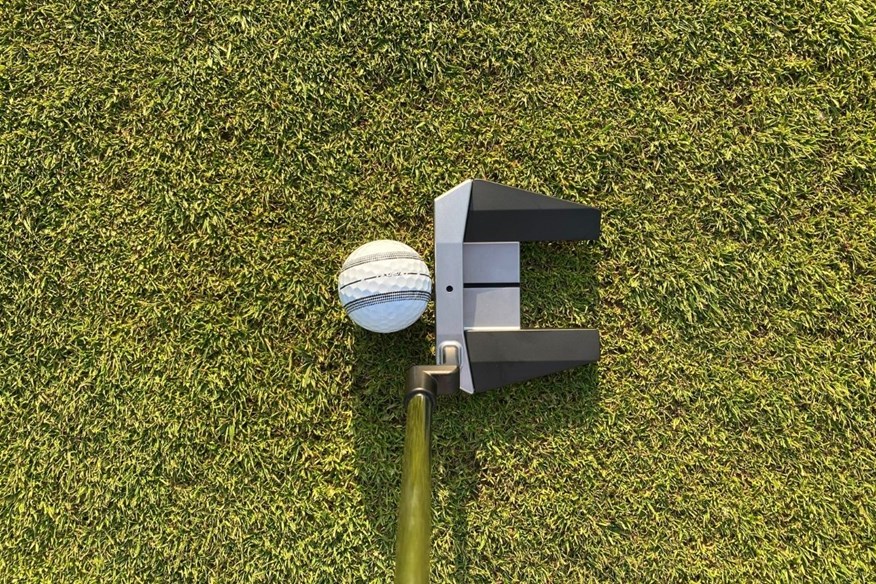
The alignment illusion
On the face of it, using a line seems like common sense. You’re giving yourself a reference point to aim at, which should theoretically improve your direction and focus. But for many golfers, especially amateurs, it doesn’t quite pan out that way.
PGA Tour star Michael Kim explains it best:
“Most amateur golfers shouldn’t use a line, because they’re usually not great at green reading and they rarely start their putts on line,” he says. “They think they’re aiming at one spot, but they’re really aiming at another.”
And that’s a big problem. A line only helps if your read is good and your stroke sends the ball where you intended. Most golfers fall short on both fronts.
Here’s something most golfers don’t realize: you’re probably not aiming straight. And that might actually be helping you.
Let’s say you tend to push your putts slightly. Over time, your body naturally adjusts. You start aiming a little left – not deliberately, just instinctively. Your brain is smart like that.
But when you start using a line, you might override that built-in compensation. You aim “perfectly” straight – and now the push misses right.
It’s the same as a player who usually hits a fade off the tee. They know what’s coming, so they aim a little left so that shape gets somewhere near the target. If they started using a line pointed dead at their target, they’d be doing themselves more harm than good.
The same principle applies on the greens. Your stroke might not be perfect, but your brain often knows how to work around it – until you try to force a different system onto it.
“They should tap more into where their brain and body is telling them where to aim,” explains Kim. “You don’t need to have a perfect stroke to make putts.”

Mrs doubtfire
Another big problem with using a line is a matter of perspective.
You read your putt from behind your ball, pick your spot, and aim your line towards it. You address your ball, and then, suddenly… the line no longer looks like it’s pointing in the right place.
From your new angle, the line often appears slightly off. Even if you were convinced you had it aligned correctly just a moment ago, that’s not what your brain is telling you now. Now you’ve got doubt in your head. Do you trust the original read, or trust your eyes now? That uncertainty can kill speed, commitment, or both. And doubt is the last thing you need when you’re standing over an important putt.
“Let’s say I’m reading a putt that looks like a cup of break from behind the ball, and then I stand over the ball and it looks like two cups. I’ll always go with what I see when I’m over the ball, because that’s the point of view where I’ve seen putts roll into the hole from or miss from,” says Kim. “Even though I think I’m pretty good at reading putts from behind the ball, my brain will sometimes pick up on something over the ball based on past experience.”
Every putt you’ve ever hit, you’ve watched the outcome from the address position – not from crouched down behind the ball. You’ve seen putts miss low, putts miss high, and putts arc beautifully into the center of the cup. Refusing to listen to your brain – and your eyes – from that exact viewpoint at address, is wasting all of that priceless information from putts gone by.
Having a line that you’re unsure is aligned correctly is far worse than having no line at all, freeing you up to commit to a spot that looks right at the most important moment: when you’re about to hit the putt.
Kim isn’t the only tour pro to have tried lines and decided they’re not helpful.

Tour pros who ditched the line
“Honestly, any time I have lines, to me, it looks like it’s aiming left,” says Jon Rahm.
Dustin Johnson occasionally lines up a putt he knows is dead straight, but on the whole, he’s much happier without.
“I’m terrible with lines,” he says. “When I have a line, I try to line the putt up with the line instead of my feel. On the days when I’m not putting good, all I’m worried about is whether I’ve got this thing lined up perfect.”
“I expected perfection out of myself, so when it comes to putting, not using the line lets me be more free and not try as hard,” says world no.1 Scottie Scheffler. “It’s about sticking to my process and controlling what I can control, and that’s having a good attitude and hitting a good putt. Something as simple as not using the line has freed me up and helped a lot with that.”

The apex trap
Another hidden danger in the line method is how you choose where to point it. A lot of players aim at the apex of the putt’s curve – the high point of the break – and point their line toward that.
But the ball isn’t travelling straight to that apex – it’s already breaking before it gets there. So if you aim your line directly at that spot, you’re likely underplaying the break, especially on longer putts.
That small misjudgment can lead to consistently missing on the low side. That leads to missed putts – and another problem. You get tired of missing putts low, so you subconsciously start hitting them firmer so they don’t take as much break. That’s fine if they happen to hit the middle of the cup, but if not, you’ll be left with a lot of unpleasant comebackers.
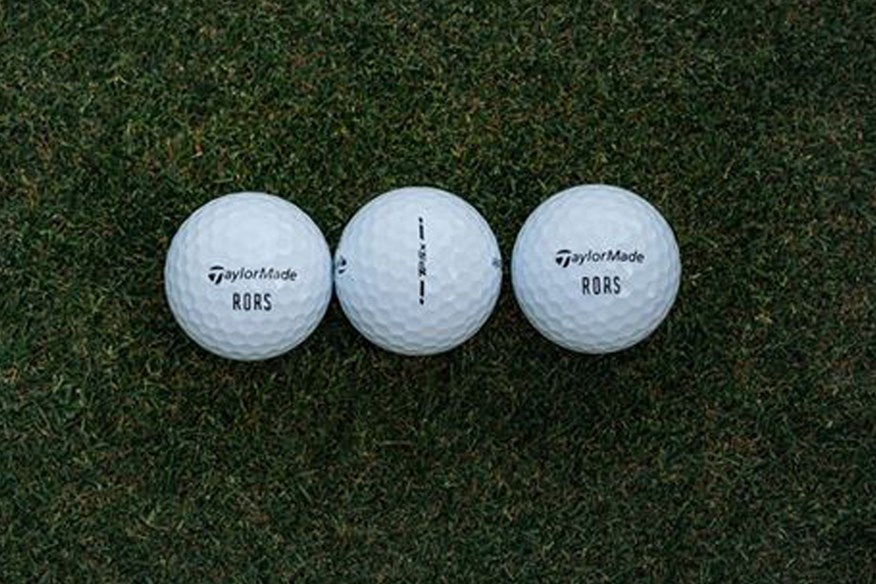
You’re not a robot
Rory McIlroy used to use a line on his ball. Now he generally doesn’t. Is it a coincidence that he’s gone from being one of the weaker putters on tour to statistically one of the strongest? Maybe, but probably not.
“I’ve sort of gone on and off using the line, but anytime I use the line, I struggle with my speed,” he says. “Because I’m so into what I’m doing [with the line], I lose connection with the target.”
“I think there are two different types of putters: someone who is more of an external-cue person, like Jon [Rahm], myself, DJ, or an internal cue, which is more getting into your own little world [using] a line,” he adds.
The external vs. internal cue differentiation is clear in sports psychology.
External cue golfers focus on outcomes: the hole, the break, the feel of the green. While internal cue golfers focus on mechanics: the stroke, the path, the line. There’s no one right way to putt, but Rory, Rahm, DJ, and plenty of others thrive when they’re reacting to the target rather than locking into the process.
Using a line naturally draws you inward. It pulls your attention away from feel and toward precision. For some, that’s helpful. For others, it’s disruptive.
It’s worth noting that Rory does use a line on tee shots, as do several other top tour pros.
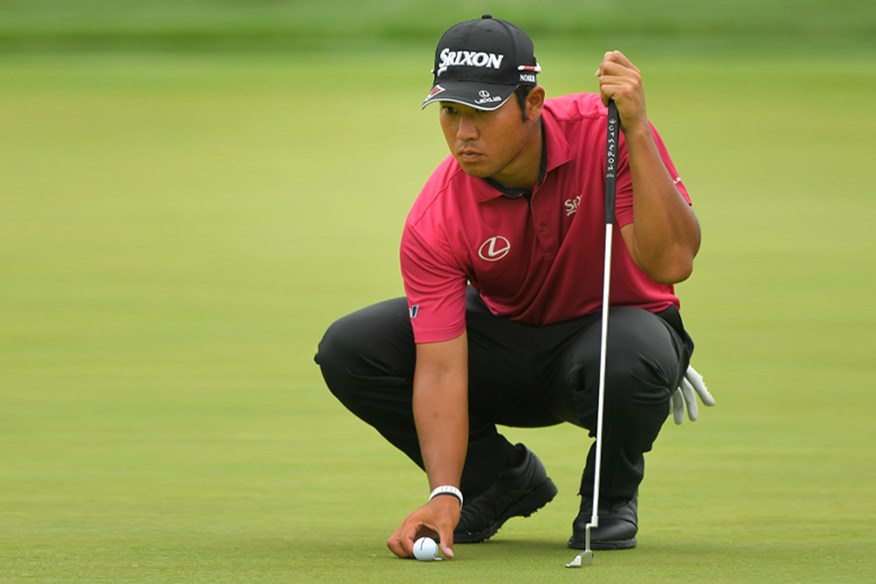
The benefits of using a line
Although we’ve discussed the current trend away from using alignment lines, countless elite golfers continue to use a line to great success.
“I did a blind test with the line on and without a line, and I just aimed it miles better with the line,” says Viktor Hovland. “You’re taking the human error out of it.”
“I putt better using the line,” says Matthew Wolff. “For me, if you take the time to line it up correctly and get comfortable with a line over the ball, I feel like I have a lot more confidence in where I’m aimed.”
“I think I was the first one to really do it,” says Brad Faxon. “I think there is such an advantage, when you learn to do it the right way. Sometimes it looks different when you’re stood over it, so that’s what you’ve got to get comfortable with – what it feels like when you’re over the ball.”

Some of the benefits of using a line can include:
- Seeing the line roll end-over-end – or not – provides feedback on the quality of strike. It won’t change whether that putt goes in, but it can help you learn whether you’re hitting good putts and just choosing the wrong line, or whether your impact needs improvement.
- Maximizing the benefit of your putter’s alignment aid. Most putters have an alignment aid, whether that’s a dot, a stripe, or something more complicated. Having a line on your ball can give you something to focus on: simply hit the line on your ball with your putter’s alignment aid.
- Confidence boost. Golfers who trust in their line and don’t second-guess it when stood over a putt often feel more committed and calm over pressure putts.
- Lines are typically most effective when the read is simple – especially on straight putts inside 10 feet. With fewer variables in play, a line can give you that laser focus to pick your spot and trust it. On tour, some players will only use a line on those dead-straight “should-make” shorties for this very reason.
A 2014 study published in the International Journal of Golf Science tested 29 amateur golfers on dead straight putts, both with a line and without. The results showed that more putts were holed from 2.6m (8.5’) when using a line, but from 2.3m (7.5’) and 1.7m (5.5’) there was no difference.
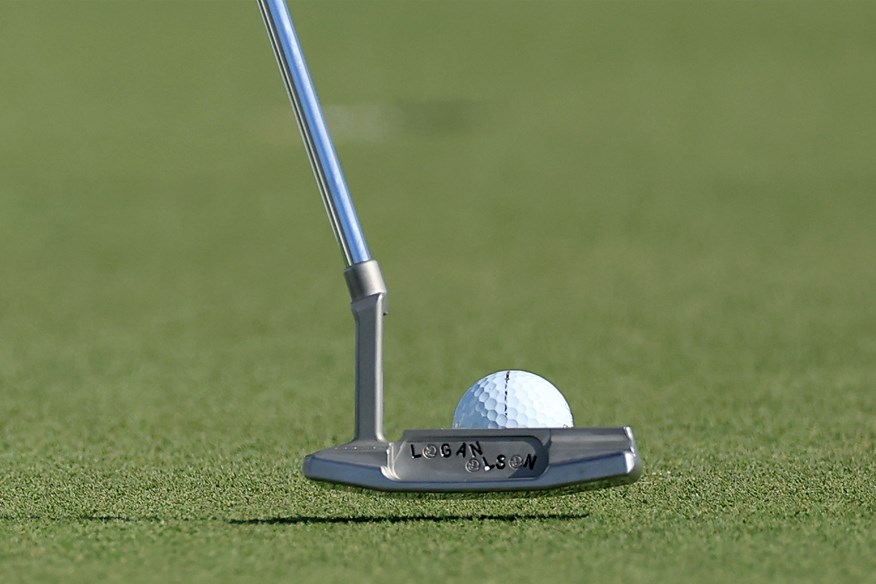
So… Who should use a line?
Let’s be clear – a line is not bad. It’s about recognising that it’s not a silver bullet, and that for many players, it introduces more problems than it solves.
Use the line if:
- You’re naturally methodical and analytical.
- You’re consistent with your read and stroke.
- You don’t second-guess yourself once you’re over the ball.
Avoid the line if:
- You rely more on feel and instinct.
- The line looking off at address is causing doubt rather than instilling confidence.
- You lose speed control when over-focusing.
- You’re prone to indecision or overthinking.

You could try the happy middle ground
Some golfers use a line within a certain range – typically fairly short putts where they have a decent chance of holing it and a relatively low risk of a three-putt – but ditch it on longer ones.
This avoids some of the downsides of line putting – the possible loss of touch and speed – on long putts, while giving you the alignment benefits on those key shorter ones.
Obviously, if you want to be able to do both, you just need to draw a line short enough that you can hide it by placing it underneath your ball when you don’t want it.
The verdict
Putting is as much art as science. It’s about trust, feel, and commitment. For some players, a line creates confidence. For others, it creates chaos.
If you’re struggling with pace, if you’re second-guessing your reads, or if you feel disconnected from the target – it might be time to ditch the line and start reacting to what you see, not what you drew.
If you’ve always used a line and you’re not always happy with the results, why not try without it for a while?
But, if you’ve never tried a line, give it a go and see how it works for you.





